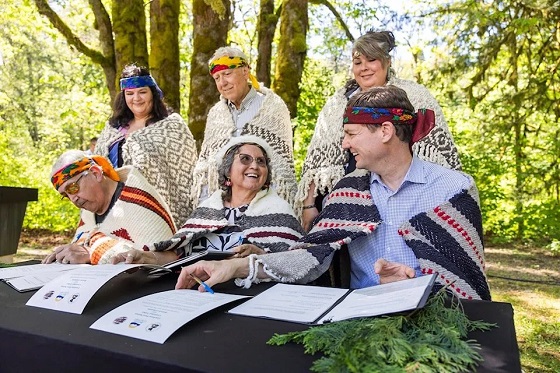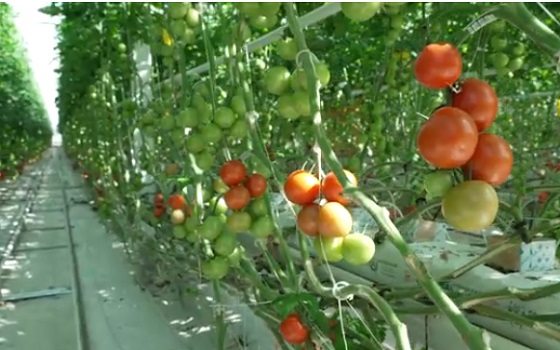Business
Premiers fight to lower gas taxes as Trudeau hikes pump costs

From the Canadian Taxpayers Federation
By Jay Goldberg
Thirty-nine hundred dollars – that’s how much the typical two-car Ontario family is spending on gas taxes at the pump this year.
You read that right. That’s not the overall fuel bill. That’s just taxes.
Prime Minister Justin Trudeau keeps increasing your gas bill, while Premier Doug Ford is lowering it.
Ford’s latest gas tax cut extension is music to taxpayers’ ears. Ford’s 6.4 cent per litre gas tax cut, temporarily introduced in July 2022, is here to stay until at least next June.
Because of the cut, a two-car family has saved more than $1,000 so far. And that’s welcome news for Ontario taxpayers, because Trudeau is planning yet another carbon tax hike next April.
Trudeau has raised the overall tax burden at the pumps every April for the past five years. Next spring, he plans to raise gas taxes by another three cents per litre, bringing the overall gas tax burden for Ontarians to almost 60 cents per litre.
While Trudeau keeps hiking costs for taxpayers at the pumps, premiers of all stripes have been stepping up to the plate to blunt the impact of his punitive carbon tax.
Obviously, Ford has stepped up to the plate and has lowered gas taxes. But he’s not alone.
In Manitoba, NDP Premier Wab Kinew fully suspended the province’s 14 cent per litre gas tax for a year. And in Newfoundland, Liberal Premier Andrew Furey cut the gas tax by 8.05 cents per litre for nearly two-and-a-half years.
It’s a tale of two approaches: the Trudeau government keeps making life more expensive at the pumps, while premiers of all stripes are fighting to get costs down.
Families still have to get to work, get the kids to school and make it to hockey practice. And they can’t afford increasingly high gas taxes. Common sense premiers seem to get it, while Ottawa has its head in the clouds.
When Ford announced his gas tax cut extension, he took aim at the Liberal carbon tax mandated by the Trudeau government in Ottawa.
Ford noted the carbon tax is set to rise to 20.9 cents per litre next April, “bumping up the cost of everything once again and it’s absolutely ridiculous.”
“Our government will always fight against it,” Ford said.
But there’s some good news for taxpayers: reprieve may be on the horizon.
Federal Conservative leader Pierre Poilievre’s promises to axe the carbon tax as soon as he takes office.
With a federal election scheduled for next fall, the federal carbon tax’s days may very well be numbered.
Scrapping the carbon tax would make a huge difference in the lives of everyday Canadians.
Right now, the carbon tax costs 17.6 cents per litre. For a family filling up two cars once a week, that’s nearly $24 a week in carbon taxes at the pump.
Scrapping the carbon tax could save families more than $1,200 a year at the pumps. Plus, there would be savings on the cost of home heating, food, and virtually everything else.
While the Trudeau government likes to argue that the carbon tax rebates make up for all these additional costs, the Parliamentary Budget Officer says it’s not so.
The PBO has shown that the typical Ontario family will lose nearly $400 this year due to the carbon tax, even after the rebates.
That’s why premiers like Ford, Kinew and Furey have stepped up to the plate.
Canadians pay far too much at the pumps in taxes. While Trudeau hikes the carbon tax year after year, provincial leaders like Ford are keeping costs down and delivering meaningful relief for struggling families.
Business
Major tax changes in 2026: Report

The Canadian Taxpayers Federation released its annual New Year’s Tax Changes report today to highlight the major tax changes in 2026.
“There’s some good news and bad news for taxpayers in 2026,” said Franco Terrazzano, CTF Federal Director. “The federal government cut income taxes, but it’s hiking payroll taxes. The government cancelled the consumer carbon tax, but it’s hammering Canadian businesses with a higher industrial carbon tax.”
Payroll taxes: The federal government is raising the maximum mandatory Canada Pension Plan and Employment Insurance contributions in 2026. These payroll tax increases will cost a worker up to an additional $262 next year.
For workers making $85,000 or more, federal payroll taxes (CPP and EI tax) will cost $5,770 in 2026. Their employers will also be forced to pay $6,219.
Income tax: The federal government cut the lowest income tax rate from 15 to 14 per cent. This will save the average taxpayer $190 in 2026, according to the Parliamentary Budget Officer.
Carbon taxes: The government cancelled its consumer carbon tax effective April 1, 2025. However, the government still charges carbon taxes through its industrial carbon tax and a hidden carbon tax embedded in fuel regulations.
The industrial carbon tax will increase to $110 per tonne in 2026. While the government hasn’t provided further details on how much the industrial carbon tax will cost Canadians, 70 per cent of Canadians believe businesses pass on most or some of the cost of the tax to consumers, according to a Leger poll.
Alcohol taxes: Federal alcohol taxes are expected to increase by two per cent on April 1, 2026. This alcohol tax hike will cost taxpayers about $41 million in 2026-27, according to industry estimates.
First passed in the 2017 federal budget, the alcohol escalator tax automatically increases excise taxes on beer, wine and spirits every year without a vote in Parliament. Since being imposed, the alcohol escalator tax has cost taxpayers about $1.6 billion, according to industry estimates.
“Canadians pay too much tax because the government wastes too much money,” Terrazzano said. “Canadians are overtaxed and need serious tax cuts to help make life more affordable and our economy more competitive.
“Prime Minister Mark Carney needs to significantly cut spending, provide major tax relief and scrap all carbon taxes.”
You can read the CTF’s New Year’s Tax Changes report here.
Automotive
Politicians should be honest about environmental pros and cons of electric vehicles

From the Fraser Institute
By Annika Segelhorst and Elmira Aliakbari
According to Steven Guilbeault, former environment minister under Justin Trudeau and former member of Prime Minister Carney’s cabinet, “Switching to an electric vehicle is one of the most impactful things Canadians can do to help fight climate change.”
And the Carney government has only paused Trudeau’s electric vehicle (EV) sales mandate to conduct a “review” of the policy, despite industry pressure to scrap the policy altogether.
So clearly, according to policymakers in Ottawa, EVs are essentially “zero emission” and thus good for environment.
But is that true?
Clearly, EVs have some environmental advantages over traditional gasoline-powered vehicles. Unlike cars with engines that directly burn fossil fuels, EVs do not produce tailpipe emissions of pollutants such as nitrogen dioxide and carbon monoxide, and do not release greenhouse gases (GHGs) such as carbon dioxide. These benefits are real. But when you consider the entire lifecycle of an EV, the picture becomes much more complicated.
Unlike traditional gasoline-powered vehicles, battery-powered EVs and plug-in hybrids generate most of their GHG emissions before the vehicles roll off the assembly line. Compared with conventional gas-powered cars, EVs typically require more fossil fuel energy to manufacture, largely because to produce EVs batteries, producers require a variety of mined materials including cobalt, graphite, lithium, manganese and nickel, which all take lots of energy to extract and process. Once these raw materials are mined, processed and transported across often vast distances to manufacturing sites, they must be assembled into battery packs. Consequently, the manufacturing process of an EV—from the initial mining of materials to final assembly—produces twice the quantity of GHGs (on average) as the manufacturing process for a comparable gas-powered car.
Once an EV is on the road, its carbon footprint depends on how the electricity used to charge its battery is generated. According to a report from the Canada Energy Regulator (the federal agency responsible for overseeing oil, gas and electric utilities), in British Columbia, Manitoba, Quebec and Ontario, electricity is largely produced from low- or even zero-carbon sources such as hydro, so EVs in these provinces have a low level of “indirect” emissions.
However, in other provinces—particularly Alberta, Saskatchewan and Nova Scotia—electricity generation is more heavily reliant on fossil fuels such as coal and natural gas, so EVs produce much higher indirect emissions. And according to research from the University of Toronto, in coal-dependent U.S. states such as West Virginia, an EV can emit about 6 per cent more GHG emissions over its entire lifetime—from initial mining, manufacturing and charging to eventual disposal—than a gas-powered vehicle of the same size. This means that in regions with especially coal-dependent energy grids, EVs could impose more climate costs than benefits. Put simply, for an EV to help meaningfully reduce emissions while on the road, its electricity must come from low-carbon electricity sources—something that does not happen in certain areas of Canada and the United States.
Finally, even after an EV is off the road, it continues to produce emissions, mainly because of the battery. EV batteries contain components that are energy-intensive to extract but also notoriously challenging to recycle. While EV battery recycling technologies are still emerging, approximately 5 per cent of lithium-ion batteries, which are commonly used in EVs, are actually recycled worldwide. This means that most new EVs feature batteries with no recycled components—further weakening the environmental benefit of EVs.
So what’s the final analysis? The technology continues to evolve and therefore the calculations will continue to change. But right now, while electric vehicles clearly help reduce tailpipe emissions, they’re not necessarily “zero emission” vehicles. And after you consider the full lifecycle—manufacturing, charging, scrapping—a more accurate picture of their environmental impact comes into view.
-

 Automotive2 days ago
Automotive2 days agoThe $50 Billion Question: EVs Never Delivered What Ottawa Promised
-

 COVID-191 day ago
COVID-191 day agoTrump DOJ seeks to quash Pfizer whistleblower’s lawsuit over COVID shots
-

 Alberta1 day ago
Alberta1 day agoAlberta introducing three “all-season resort areas” to provide more summer activities in Alberta’s mountain parks
-

 Business2 days ago
Business2 days agoStorm clouds of uncertainty as BC courts deal another blow to industry and investment
-

 Agriculture1 day ago
Agriculture1 day agoGrowing Alberta’s fresh food future
-

 International1 day ago
International1 day agoTrump admin wants to help Canadian woman rethink euthanasia, Glenn Beck says
-

 Alberta1 day ago
Alberta1 day agoThe case for expanding Canada’s energy exports
-

 Censorship Industrial Complex1 day ago
Censorship Industrial Complex1 day agoOttawa’s New Hate Law Goes Too Far









